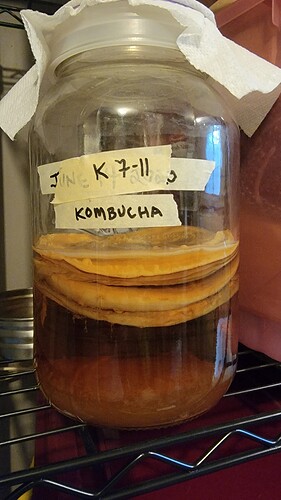A few years ago kombucha brewers got into a little hot water with BATF (the gvt booze people) over the alcohol content of their beverages – 3.5%. Currently, 0.5% alc content in allowed in commercially produced kombucha. To reduce the alcohol, either yeast and bacteria killing chemistry, or alcohol eating bacteria is added, and/or low temp brewing is used. Different brewers use different methodologies.
The success of making your own kombucha from a bottled product is going to depend on the brand and methodology they use to reduce the alcohol content. I went onto craigslist.org and bought a scoby from a local gentleman for a couple bucks - less then the cost of a bottle of kombucha. Lots of folks sell their excess scoby, or give them away for free on craigslist. The scoby is a non-stop, ever-growing creature. Anyone that brews their own kombucha has to deal with the scoby creature at some time or the other, and then again later on, and then again, and again … You have been warned. 
By far, the best tasting kombucha I made was with the continuous brewing technique. I used a 2 gal glass jar that came with a plastic spigot. I replaced the plastic spigot with one made of stainless steel, cost about as much as the jar. Note: you want the spigot a little above the bottom of the jar because dead yeast will be piling up on the jar bottom.
Build up the kombucha until the jar is full – 2gals of the stuff. Then, when ready, drain off only ½ gal of kombucha at a time, leaving the rest in the jar. Replace with ½ gal fresh tea and sugar, stir, then wait until the brew is ready again. Every time you do this (every 4 to 7 days), feed the kombucha, you will get a new layer on the scoby … you are also feeding the scoby creature … you have been warned, again. 
To clean the 2 gal jar, once every 6-months or so, I placed the scoby on a piece of clean kitchen plastic wrap on a dinner plate, drained off all of the kombucha into four clean ½ gal mason jars. After cleaning out the 2 gal jar, replace all of the kombucha. Rip the scoby in half between layers, threw away the top half, and put the bottom half back into the jar. This is your third and final warning … 
Eventually I quit drinking the stuff. A better fermented beverage is bourbon. If I remember correctly, to replenish the ½ gal taken from the jar, I would brew ½ gal tea, mix in 1/3 cup (80 ml) of sugar, let it cool before add to the jar.



 In fact, I just went down to take a photo and it looks like I’m overdue for 2021!
In fact, I just went down to take a photo and it looks like I’m overdue for 2021!